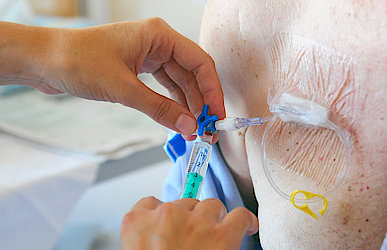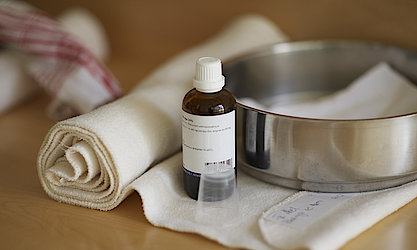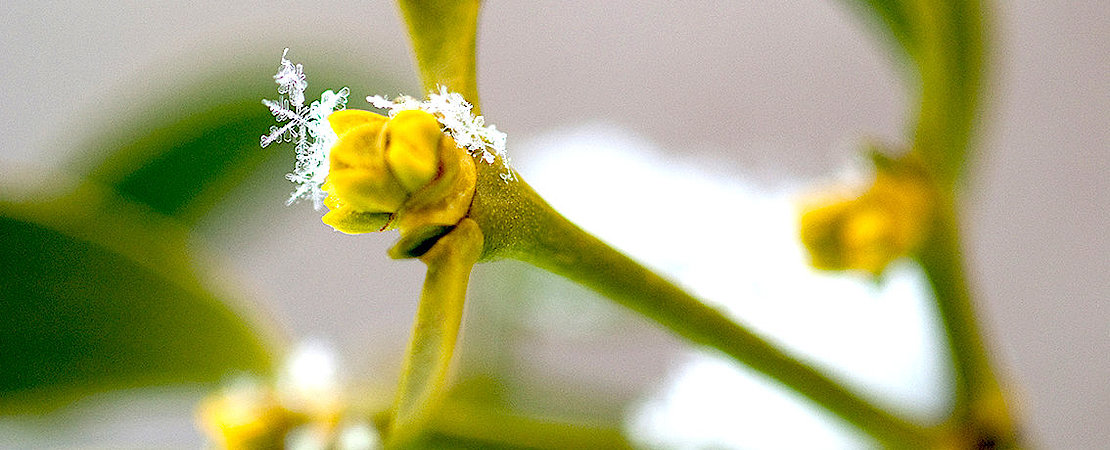Mistletoe therapy in combination with other therapies
Mistletoe therapy can be started before surgery or be applied in parallel with other therapies. If you begin mistletoe therapy before surgery, you should not place the injection in the surgical field in order to avoid inflammatory reactions. Existing scars should also be avoided.
Oncologists have repeatedly expressed fears that mistletoe therapy could accelerate the degradation of cytostatic drugs and thus impair the efficiency of chemotherapy. However, several studies have shown that this phenomenon does not apply to mistletoe therapy. It does not impair the effect of chemotherapy, but rather makes it more tolerable and can thus support and augment its effect.
Preclinical research has demonstrated that mistletoe extraxts and their constituents can protect the cell’s genetic material (DNA) from being damaged by toxins. However, this process of DNA stabilisation has only been shown for healthy white blood cells (lymphocytes) and was not observed in cancer cell lines. Mistletoe therefore probably stabilizes healthy cells and protects them from the effects of chemotherapy, while the already unstable cancer cells remain vulnerable.
If mistletoe therapy is applied in parallel with chemotherapy, the mistletoe extract must be dosed in such a way that no fever occurs. It is hardly possible to differentiate whether the body temperature rises as a result of mistletoe therapy or whether the fever is an indication of an infection that can occur during chemotherapy due to the suppressed immune system, which is then always an alarm signal.
Mistletoe therapy also has no negative effect on other cancer therapies. This applies to antihormonal substances, which are mainly used in breast cancer (e.g., tamoxifen, anastrozole) as well as to some antibody therapies (e.g., trastuzumab, pertuzumab) . But also for immunocheckpoint inhibitors first pilot study results indicate no negative effect. Regarding the latter topic, a current larger-scale prospective study is being conducted of which first intermediate results from autumn 2019 pointed to the same direction.
It has been shown that mistletoe therapy does not reduce the effect of these drugs, but rather can ensure that the required dose will be maintained and thus conventional treatment can become even more effective – mistletoe therapy may reduce the adverse effects of these drugs without impairing their effectiveness.
Mistletoe therapy can also be well combined with radiotherapy. It is only important to ensure that the mistletoe injection is not carried out in or near the irradiation field in order to avoid excessive inflammation of the skin.

Good compatibility
All studies show that a mistletoe therapy can reduce the adverse effects of various conventional cancer therapies. This applies to chemotherapy as well as to modern targeted therapies. Mistletoe therapy can weaken its side effects without affecting its efficacy.

Using nature's resources
Many complementary therapies have been well-established, especially in oncological aftercare, especially compresses and pads to convey warmth or to calm inflamed skin areas. In radiotherapy, for example, the skin reacts particularly sensitively, and then compresses with soothing substances such as calendula extracts are useful.
During concomitant chemotherapy with subcutaneous mistletoe therapy (injections under the skin),body temperature should generally not rise above 38 °C, because fever during chemotherapy is always seen as an alarm sign indicating a decline of the immune response and the onset of potentially dangerous infections. It is hardly possible to distinguish whether the fever is occurring as a result of mistletoe therapy and is harmless, or whether it is indicating the presence of an infection. Exceptions to this rule should only be made in individual cases and in close consultation with the treating oncologist.
During radiotherapy, mistletoe extract should not be injected into the irradiated area of the body to avoid inflammation. Injections should also not be administered into or near the surgical area in order not to impair wound healing. The mistletoe preparation should also not be injected into existing scars.
